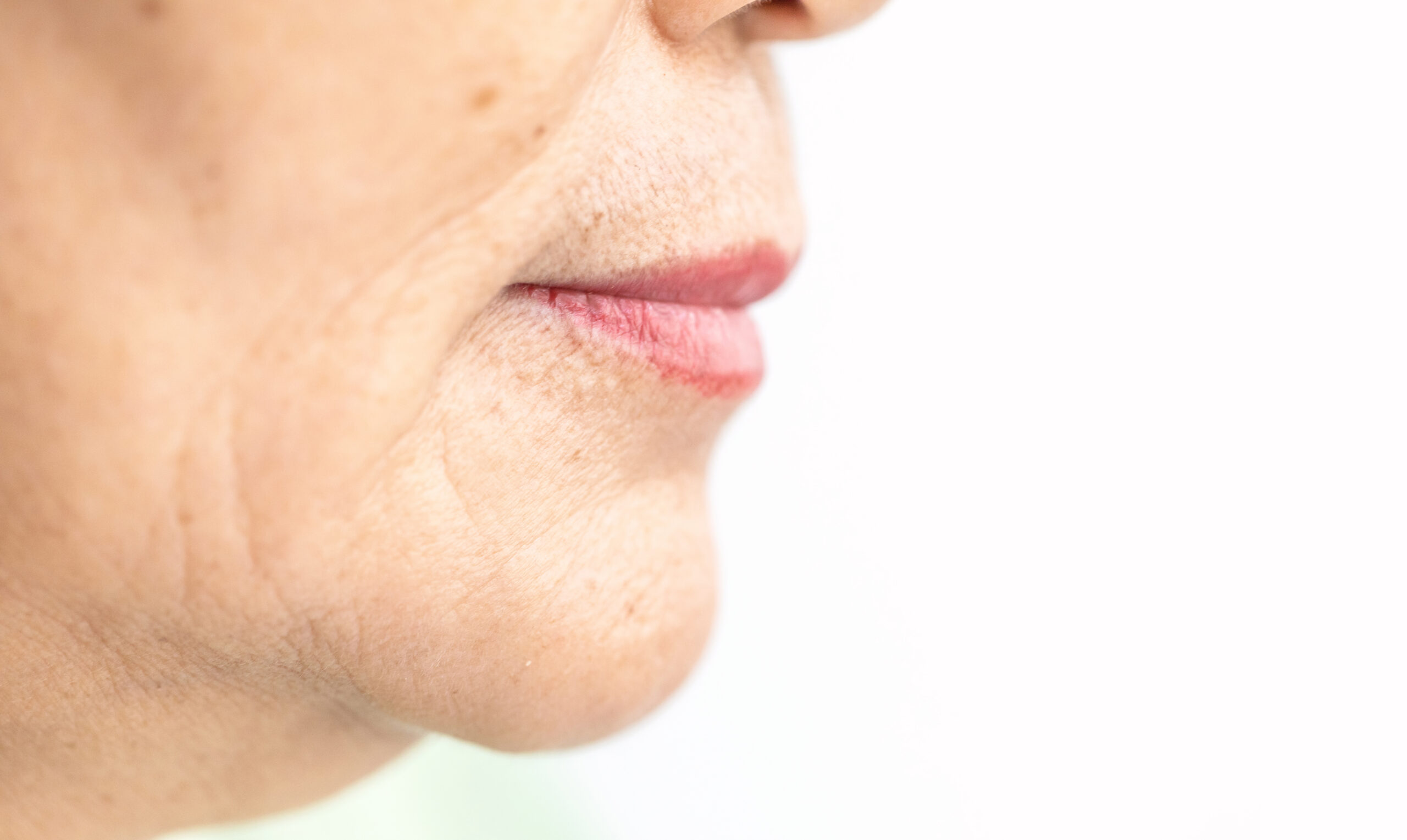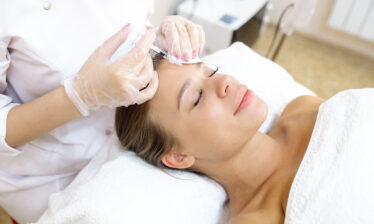Cosmetic surgery can be done if you want to improve the appearance of your face or body and boost your self-confidence. Cosmetic procedures like liposuction or facelift require surgery. However, other minimally invasive procedures like neurotoxin injections are available to treat signs of aging like wrinkles and fine lines.
The most common neurotoxin used for cosmetic procedures is Botulinum Toxin or Botox1. It is a neurotoxic protein produced by the bacteria Clostridium botulinum, which can affect the nervous system and cause muscle paralysis2. However, in small quantities, Botox causes persistent activation of muscles, which gives an appearance of a tighter face with less wrinkles.
Researchers in the early 1900s isolated and purified this neurotoxin and tested its effects on muscles3. In 1979, the FDA approved its use to treat strabismus or lazy eye. Over time, different types of the botulinum toxin were studied and approved for the treatment of wrinkles and for conditions like hyperactive bladder, excessive salivation, excessive sweating, and migraines4. They are still used today because Botox is generally well tolerated. However, it can have potential side effects like breathing problems, allergic reactions, muscle weakness, or eye droop in some.
As reported by the American Society of Plastic Surgeons, 4.4 million people took the Botulinum toxin type A injection in 20205. Currently, different formulations of Botulinum toxin A like onabotulinum toxin A (Botox)6 and abobotulinum toxin A (Dysport)7 are available for use.
They are both types of Botulinum toxin A but have some fundamental differences. So, let’s dive deep into Dysport vs Botox.
What Is Dysport Treatment?
Dysport treatment involves the injection of the formulation called abobotulinum toxin A. It was first approved for cosmetic use by the FDA in 2009.
What Is Botox Treatment?
Botox is the brand name for the botulinum toxin A formulation known as onabotulinum toxin A. This treatment is used for cosmetic purposes and has been since the FDA approved it in 2002.
Dysport vs Botox
Here’s all you need to know about Dysport vs Botox.
Who they’re for
When used for cosmetic purposes, Dysport and Botox treatments can be given to adults who have moderate to severe frown lines on their foreheads. These treatments are also used to smooth out wrinkles like crow’s feet, and frown or laugh lines.
Before taking any Dysport or Botox injections, your doctor will need to check your medical history. Avoid getting neurotoxin injections if you have the following risk factors:
- Pregnancy
- Skin infections or allergies
- Botulinum toxin sensitivity
Also, if you take blood thinners or muscle relaxants, you need to speak with your doctor about whether to continue them.
FDA-approved uses
Dysport and Botox are approved for cosmetic use by the FDA.
They can both be used to treat the following areas of the face:
- Glabellar lines or frown lines on the forehead
- Wrinkles like crow’s feet or laugh lines
- 11 lines between the brows
Apart from these FDA-approved uses, Botox and Dysport can be used for off-label uses to treat sagging brows, neck bands or wrinkles, and a gummy smile.
Effectiveness
Most studies use a 2.5:1 ratio of Dysport to Botox. This means 25 units of Dysport are equivalent to 10 units of Botox. However, research shows inconsistent results regarding the effectiveness of Dysport vs Botox.
In a study sponsored by Dysport manufacturers, Dysport was found to be effective for a longer duration than Botox in people with severe forehead lines8. On further trial, the Dysport injection was also found to be quicker and less painful than Botox9.
Another study showed that there was no difference in the duration of action of Dysport and Botox10. But it showed that Dysport had higher efficacy than Botox in treating upper facial lines.
These differences in effectiveness can vary based on the neurotoxin manufacturer and must be considered cautiously.
Costs
The cost of neurotoxin treatment depends on the area being treated, the number of injections required, and the location of the clinic.
On average, Dysport is reported to be less expensive than Botox. While Dysport treatment can be approximately $450 per session, Botox costs $550 per session11. These costs vary from clinic to clinic. Some doctors may charge per unit of injection.
Some clinics also offer membership programs. Once you pay an annual fee, you can get discounted prices for each injection of Dysport or Botox.
Insurance doesn’t cover Dysport or Botox as they are cosmetic procedures.
Procedure
Dysport and Botox treatments take only a few minutes. Typically, the doctor uses a very small, thin needle to minimize discomfort. The doctor will divide the dose into five portions and inject it into different sites on the forehead.
Both treatments are done in the doctor’s office and don’t need any recovery time.
Results
Dysport starts taking effect within 2 or 3 days of the procedure. Results can last between 3 and 4 months.
Botox can take up to a week to take effect. Effects can last for 3 to 4 months.
Side effects
Dysport and Botox injections are safe and relatively painless. Some side effects like minor pain or swelling may occur in the treated area, but they resolve with time. Contact your doctor if the side effects persist.
Some other common side effects of Dysport and Botox include rash, irritation, redness, numbness, and headache. Although rare, the two treatments also carry a risk of botulinum toxicity. It can cause shortness of breath or difficulty breathing. It can also cause muscle weakness leading to eyelid or eyebrow droop on the face, but this wears off in 3 to 4 months just like the medication.
Dysport treatments can cause nausea, sinusitis, and upper respiratory infection in some. Botox may cause paralysis, but it is extremely unlikely.
Seeking Treatment
Now that you understand the basics of Dysport vs Botox, it’s time to get your doctor’s opinion to help you consider what’s best for you. Your doctor will check your medical history, identify what treatment suits you best, and help you prepare for it.
You can access My Filler Treatment’s information repository on neurotoxin and filler treatments to know more about different cosmetic procedures. This will help you stay informed before you visit your doctor.
SOURCES:
- FDA: “ BOTOX (onabotulinumtoxinA).”
- Perspectives in Biology and Medicine: “ Botulinum toxin: the story of its development for the treatment of human disease.”
- Perspectives in Biology and Medicine: “ Botulinum toxin: the story of its development for the treatment of human disease.”
- Tremor and Other Hyperkinetic Movements: ” History of Botulinum Toxin Treatment in Movement Disorders.”
- American Society of Plastic Surgeons: ” Plastic Surgery Statistics Report 2020.”
- FDA: “ BOTOX (onabotulinumtoxinA).”
- FDA: “ DYSPORT® (abobotulinumtoxinA) for injection, for intramuscular use.”
- The Journal of Clinical and Aesthetic Dermatology: ” Duration of Action of AbobotulinumtoxinA and OnabotulinumtoxinA.”
- Journal of Drugs and Dermatology: ” Comparing the clinical attributes of abobotulinumtoxinA and onabotulinumtoxinA utilizing a novel contralateral Frontalis model and the Frontalis Activity Measurement Standard.”
- Healthline: “ All About Botox for Smile Lines.”
- Journal of Cosmetic and Laser Therapy: ” Dosing, efficacy and safety plus the use of computerized photography for botulinum toxins type A for upper facial lines.”






